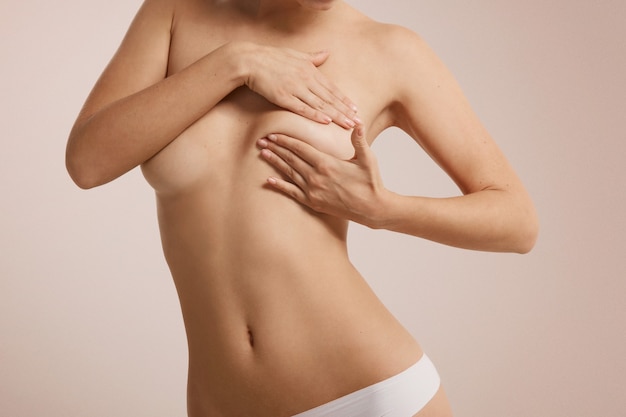Breast self-examinations are a vital method for identifying breast cancer early. This simple self-assessment helps individuals get to know the usual look and feel of their breasts, making it easier to spot any unusual changes.
The Purpose of Self-Examinations
Regular self-exams help you become familiar with how your breasts normally look and feel so you can quickly notice any changes. A common sign of a possible tumor is a lump, which might not hurt but can be felt or even seen.
Pay attention to changes in your nipples, like if they become retracted, protrude more, or start secreting fluid. Watch for changes in the skin that only affect one breast. Regular self-exams let you keep track of your breast tissue over time, making it easier to catch any new hard areas.
Understanding Breast Cancer
Breast cancer is the most frequently diagnosed cancer in women. It happens when some breast cells start growing uncontrollably, forming a tumor in the breast. Tumors can be benign (like fibroadenomas or cysts) or malignant (carcinomas). Malignant tumors are risky because they can invade nearby tissues or spread to other parts of the body.
Early diagnosis is possible with regular mammograms and check-ups based on age and personal history. Treatment options depend on how advanced the cancer is and its specific characteristics. Current treatments include surgery, chemotherapy, radiation therapy, hormone therapy, and biological therapies.
When to Perform Self-Examinations
Starting at age 20, you should do a breast self-exam once a month, ideally one week after your period ends. This timing is suggested because breast tissue changes monthly due to hormones. Knowing your body helps you spot normal changes versus potential problems.
If you鈥檙e pregnant or in menopause, the timing is less crucial. However, any skin changes, nipple fluid, or changes in breast shape should prompt a visit to the doctor.
How to Conduct a Self-Examination
A self-exam involves two steps: observation and palpation.
Observation: Stand in front of a mirror and look for changes in breast shape, skin color, nipple appearance, and any skin dimples or ulcerations. Do this with your arms at your sides, then with arms raised, and again with hands on your forehead while contracting your chest muscles.
Palpation: Use the inner parts of three joined fingertips to feel your breasts in small, concentric circles. Check each quadrant of the breast with gradually increasing pressure to detect any hard areas or nodules.
What to Look Out For
During a self-exam, notice any changes in the size or shape of one or both breasts, any thickening or lumps in the breast or armpit, and any discharge from the nipples. Watch for depressions, wrinkles, bumps, or dimples on your skin, as well as unusual sensations.
Look out for nodules, changes in the nipple’s appearance, skin and areola rashes, and any unexplained breast or armpit pain.
Remember, self-examinations are not a substitute for professional breast exams or imaging tests like mammograms and ultrasounds. However, doing regular, thorough self-exams can help you detect cancer early and potentially prevent it from becoming advanced. If you find any of these symptoms, see a healthcare professional right away.







